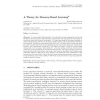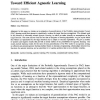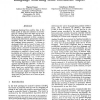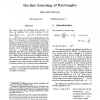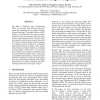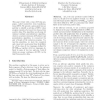COLT
1992
Springer
14 years 6 months ago
1992
Springer
This paper deals with finite size networks which consist of interconnections of synchronously evolving processors. Each processor updates its state by applying a "sigmoidal&q...
COLT
1992
Springer
14 years 6 months ago
1992
Springer
We propose an algorithm called query by committee, in which a committee of students is trained on the same data set. The next query is chosen according to the principle of maximal...
COLT
1992
Springer
14 years 6 months ago
1992
Springer
COLT
1992
Springer
14 years 6 months ago
1992
Springer
In this paper we initiatean investigationof generalizationsof the ProbablyApproximatelyCorrect (PAC) learningmodelthat attemptto significantlyweakenthe target functionassumptions.T...
COLT
1992
Springer
14 years 6 months ago
1992
Springer
Language learning from positive data in the Gold model of inductive inference is investigated in a setting where the data can be modeled as a stochastic process. Specifically, the...
COLT
1992
Springer
14 years 6 months ago
1992
Springer
COLT
1992
Springer
14 years 6 months ago
1992
Springer
COLT
1992
Springer
14 years 6 months ago
1992
Springer
Machine learning of limit programs (i.e., programs allowed finitely many mind changes about their legitimate outputs) for computable functions is studied. Learning of iterated lim...
COLT
1992
Springer
14 years 6 months ago
1992
Springer
We consider learning in situations where the function used to classify examples may switch back and forth between a small number of different concepts during the course of learnin...
COLT
1992
Springer
14 years 6 months ago
1992
Springer
This paper deals with a class of Prolog programs, called context-free term transformations (CFT). We present a polynomial time algorithm to identify a subclass of CFT, whose progr...

